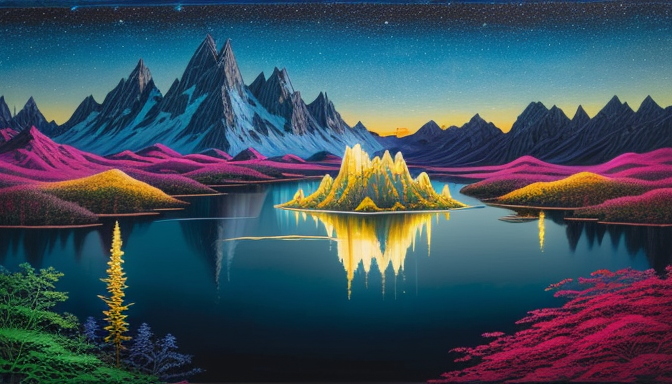Creating a fantasy world is like painting a vibrant canvas where every brushstroke adds depth and personality. Think about iconic universes like Dungeons & Dragons, Forgotten Realms, and Warhammer. Each of these realms is not just a backdrop; they are living, breathing entities filled with rich lore and intricate world mechanics. So, how do you craft your own captivating universe? Let’s dive into some essential techniques!
Understanding the cultures within your fantasy world is crucial. Imagine a society where the people worship the sun, believing it to be the source of all life. These beliefs shape their customs, festivals, and even their governance. To develop unique cultures, consider the following:
- Customs: What rituals do they have? How do they celebrate life and death?
- Beliefs: What do they hold sacred? Are there taboos that govern their behavior?
- Social Structures: Who holds power? Is it a monarchy, a council, or something entirely different?
Each of these elements adds layers to your narrative, making it feel authentic and immersive.
The physical setting of your fantasy world plays a vital role in storytelling. Picture a sprawling forest filled with towering trees, or a desolate wasteland where survival is a daily struggle. These environments not only enhance the atmosphere but also influence the plot. To create diverse landscapes, think about:
- Geography: Mountains, rivers, and valleys can dictate the movement of characters and the flow of the story.
- Climate: How does the weather affect the inhabitants? A harsh winter can create tension and conflict.
- Flora and Fauna: Unique creatures and plants can add intrigue and challenge to your world.
By weaving these elements together, you can create a fantasy world that feels as real as our own, inviting readers to lose themselves in its wonders.
Creating Compelling Cultures
When it comes to building a fantasy world, the cultures that inhabit it are the beating heart of your narrative. Just think about iconic universes like Dungeons & Dragons, Forgotten Realms, and Warhammer—these realms are rich with lore and intricate social structures that make them unforgettable. So, how do you craft cultures that feel alive and authentic? It begins with understanding the core elements that shape them.
Start by diving into the customs and beliefs of your fictional societies. What do they celebrate? How do they mourn? Consider their rituals, festivals, and daily practices. For instance, in a world where the sun is worshipped as a deity, the culture might have a festival that celebrates the summer solstice with vibrant parades and offerings. This not only adds depth but also gives readers a glimpse into the characters’ motivations and conflicts.
Next, think about the social structures that govern these cultures. Are they matriarchal or patriarchal? Is there a caste system in place? These elements can drive your plot and influence character relationships. A well-defined hierarchy can create tension, as characters navigate their positions within society. For example, in a culture where magic users are revered, a non-magical protagonist might struggle for acceptance, leading to compelling character arcs.
Ultimately, the key to creating compelling cultures is to ensure they feel organic and interconnected with the world around them. By weaving together customs, beliefs, and social structures, you’ll create a tapestry of life that draws readers in and makes them feel like they’re part of something truly special.

Designing Environments and Landscapes
When it comes to in your fantasy world, think of it as painting a canvas where every brushstroke tells a story. Iconic universes like Dungeons & Dragons and Forgotten Realms have mastered this art, infusing their settings with rich lore and intricate mechanics that captivate the imagination. Imagine wandering through the misty forests of Faerûn, where every tree whispers secrets of ancient elves, or traversing the rugged mountains of Icewind Dale, where the chilling winds carry tales of long-forgotten battles.
To create a truly immersive landscape, consider the following elements:
- Geography: What natural features define your world? Mountains, rivers, and oceans can shape cultures and adventures.
- Climate: The weather can influence everything from the clothing your characters wear to the crops they grow.
- Flora and Fauna: Unique plants and creatures can add depth and intrigue, making your world feel alive.
For instance, in Warhammer, the desolate wastelands of the Old World contrast sharply with the lush, vibrant realms of Azyr. This diversity not only enhances the visual appeal but also influences the narrative—the harshness of the environment can reflect the struggles of its inhabitants. So, when crafting your landscapes, think about how they can enhance the story you want to tell. After all, a well-designed world is not just a backdrop; it’s a character in its own right, shaping the journey of your heroes and villains alike.
Frequently Asked Questions
- What is world-building in fantasy writing?
World-building is the process of creating an imaginary universe where your story takes place. It involves crafting detailed settings, cultures, and histories that make your fantasy realm feel real and immersive.
- How do I create believable cultures in my fantasy world?
Start by considering the values, traditions, and social structures of your cultures. Think about how geography, history, and religion shape their way of life. The more nuanced and layered your cultures are, the more engaging your story will be!
- What role do landscapes play in storytelling?
Landscapes are not just backdrops; they can influence the mood, plot, and character development. A treacherous mountain range might symbolize a character’s inner struggles, while a lush forest could represent hope and growth. Use landscapes to enhance your narrative!
- Can I mix different cultures and environments?
Absolutely! Mixing various elements can lead to unique and unexpected combinations that enrich your world. Just be sure to maintain consistency and coherence in how these cultures interact with each other.

Recent Comments